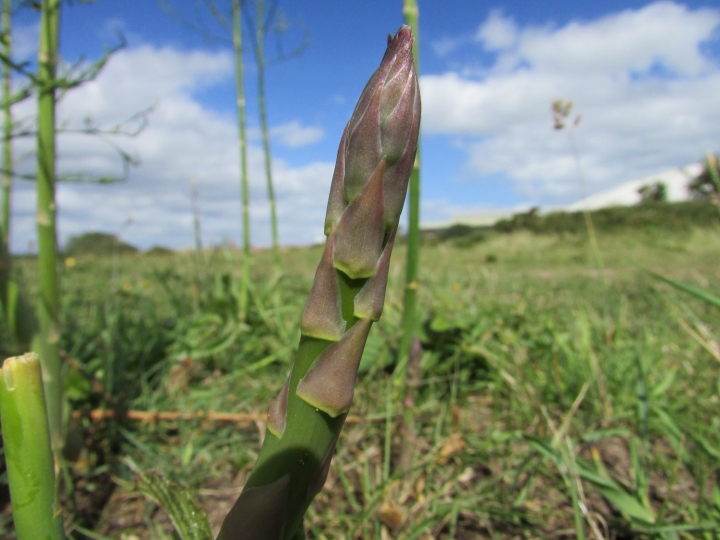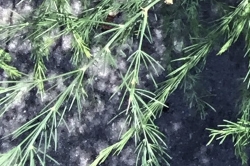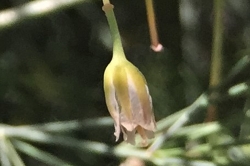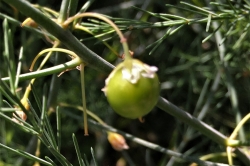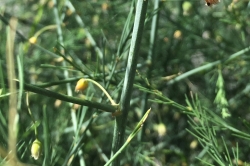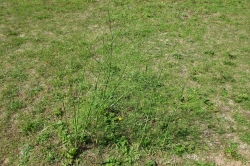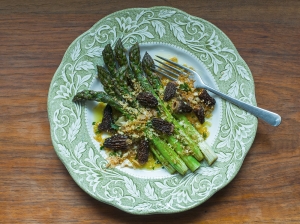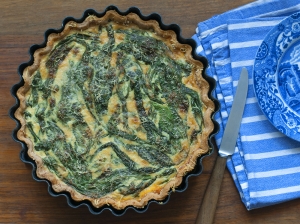Wild Asparagus is mainly the escaped cultivated plant but a few different varieties can grow in the UK. There is also confusion over whether Asparagus officinalis sub prostratus is a sub species or a separate species itself and grows prostrate along the ground, otherwise it looks like A. officinalis. Although edible Wild Asparagus is on the endangered list and should be admired rather than picked.
https://www.nationaltrust.org.uk/features/a-helping-hand-for-the-wild-asparagus-
Home / Hedgerow Guide /
Asparagus
Asparagus
| Hedgerow Type | |
| Common Names |
Sparrow Grass |
| Scientific Name |
Asparagus officinalis, Asparagus prostratus |
| Season Start |
Mar |
| Season End |
May |
Please note that each and every hedgerow item you come across may vary in appearance to these photos.
Leaves
The leaves look feathery but are needle like and can feel quite sharp and are not actually true leaves but a modified stem, pictured. The true leaves are the small triangular scale like structures on the young spears and stems.
Flowers
The flowers are bell-shaped, greenish-white to yellow and are produced singly or in clusters of two or three in the junctions of the branches. Later in the year toxic red berries are produced.
Stem
In its wild shrub like form, the stem is woody and at the base of young growth there should be dry triangular leaf scales.
Habitat
Wood edges, gardens, waste ground and soil with a salt content, ie; coastal or alongside roads that are gritted.
Possible Confusion
There are a few spikey shrubs that look similar but none grow asparagus spears from them.
Taste
Asparagus.
Frequency
Occasional.
Collecting
As it is an endangered species only small amounts of asparagus tips should be harvested when a fully grown shrub is encountered, these ‘tips’ grow along the stem and will open out into what look like leaves if left to grow.
Medicinal Uses
Asparagus can be used as a diuretic, a laxative or a kidney tonic.
Other Facts
Traditionally used as an aphrodisiac.


 (9 votes, average: 4.11 out of 5)
(9 votes, average: 4.11 out of 5)